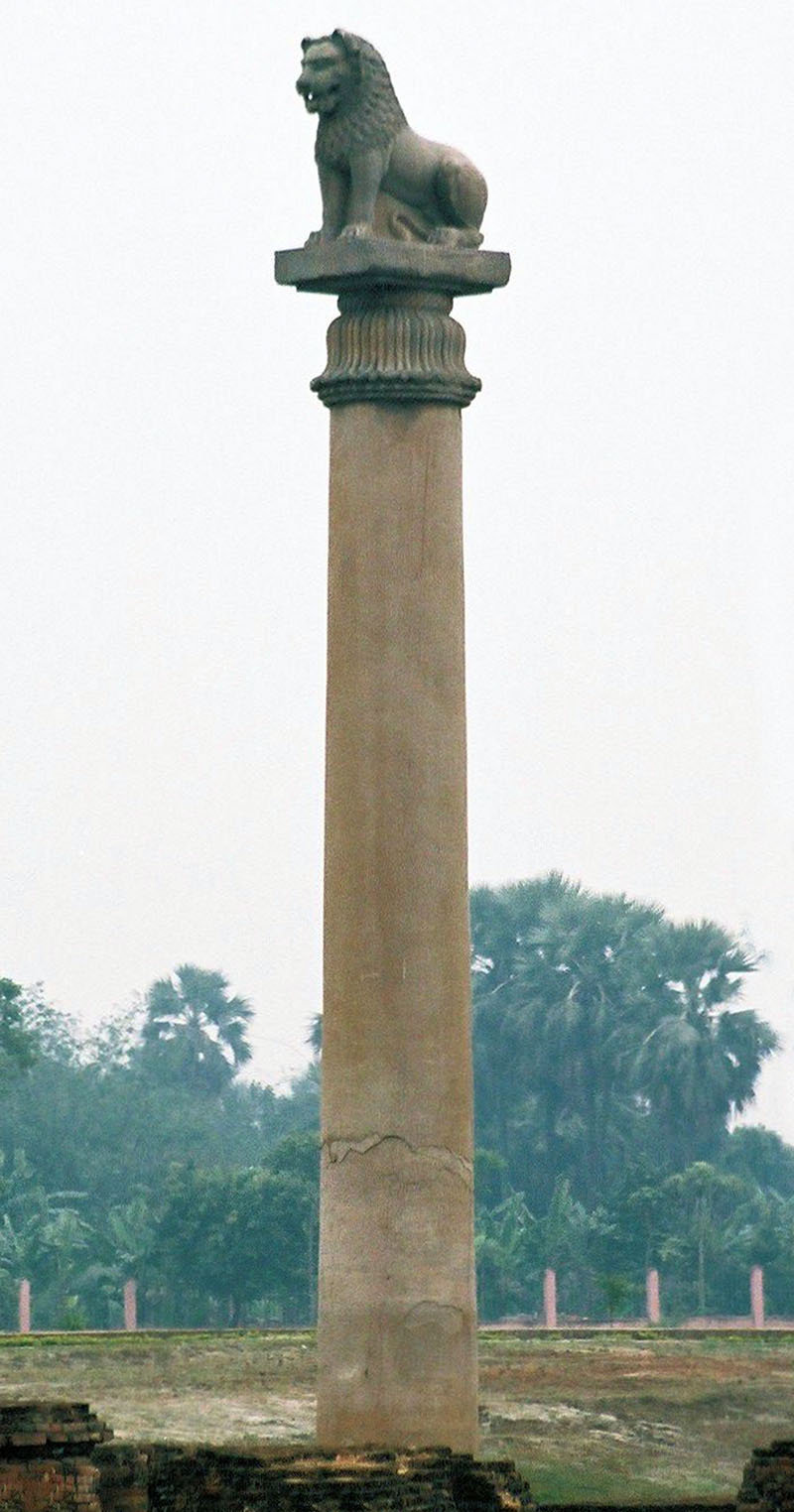A buff, unpolished, red sandstone pillar surmounted by a lion, the Ashoka Pillar at Vaishali is located at the ancient city of Vaishali, today the village of Basarh in the Muzaffarpur district of Bihar. It is commonly accepted to be one of several pillars installed under the patronage of the Mauryan king Ashoka in the third century BCE. It is 18.3 meters high and is the heaviest of all the Ashokan pillars. Unlike other pillars attributed to Ashoka, the Vaishali pillar resembles those of the Greek Doric order.
The Ashoka Pillar at Vaishali is one among only two such pillars that have survived intact in their original location. Although many sources describe it as a monolith, recent research has argued that it was assembled from discrete blocks of chunar. The Chinese monk Xuanzang described seeing this pillar at Vaishali during his travels in the seventh century CE and wrote that it was built by “Ashoka-raja”.
Stylistically, the pillar is comprised of three segments: the footing, the shaft and the capital. The shaft is uninscribed, unlike most Ashokan pillars, and is surmounted with a bell-shaped lotiform), surmounted by a lion on a platform. The platform is a plain rectangle. The stone lion on top is also more abstract and less aggressive in appearance than that of the pillar at Lauriya-Nandangarh and other Ashokan pillars. Scholars have suggested a stylistic similarity to lions on the railing of the Bharhut stupa, which was made around 150 BCE.
The symbols of the lotus and the lion are related to Ashoka’s sovereignty as well as to Buddhist iconography. The lotus signifies fecundity and purity in several Indian traditions, and here refers to the occasion of the Buddha’s birth. The lion was a common ancient symbol of royal power and also associated with the Buddha, who was known as Shakyasimha (“the lion of the Shakya clan”).
There has been considerable debate over the date of the pillar. Some scholars have argued that the lack of an inscription suggests a date well before the reign of Ashoka, since edicts are usually found inscribed on other Ashokan pillars. However, this absence could be the result of erasure due to erosion or vandalism. Other scholars have argued that inscriptions are not an essential component of the pillars’ Ashokan or Buddhist identity, since their architectural context establishes these strongly. The pillar at Vaishali is situated close to a stupa that has been dated to the same period and features Mauryan architectural characteristics. It has also been speculated that the pillar may have been repurposed by Ashoka, or that it might have been the first such pillar erected during his reign, serving as an early draft for later pillars at Sankisa, Allahabad, and Sarnath among others.







